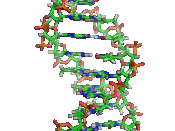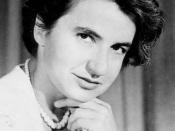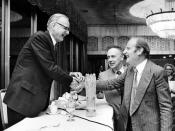DNA, or deoxyribose nucleic acid, is a double stranded, helical nucleic acid that stores hereditary information. Ever since its discovery in the late 1800's, DNA has been used in countless experiments to further find more information about it. Most of the discoveries have been recent because they have occurred in the last century. In that century , scientific exploration led to the discovery of the role and structure of DNA by experiments that found its functions.
In the early 20th century, it was known that copies in chromosomes were the cause of heredity, however the question of what genes are made of had not yet been answered. In 1928, Frederick Griffith, a bacteriologist, tried to prepare a vaccine against a pneumonia-causing bacterium, streptococcus pneumoniae. When he worked with two strains of streptococcus pneumoniae, Griffith discovered that harmless bacteria could turn virulent when mixed with bacteria that cause disease. That process is now called transformation, a change in phenotype caused when bacteria take up foreign genetic material.
The material responsible for transformation continued unknown for decades until Oswald Avery and his co-workers, biologists at the Rockefeller Institute, demonstrated that the material responsible for transformation was DNA. Later experiments revealed DNA's role. In 1952,two scientists, Alfred Hershey and Martha Chase did an experiment with E. Coli bacteriophages, or viruses that infect bacteria, to reveal DNA's role. The experiment showed that only the DNA of a virus needs to enter the bacterium to infect it and that DNA, not protein, was hereditary material. This experiment also showed that DNA is the molecule that stores DNA in living cells. This discovery of DNA's role triggered an interest among scientists to find DNA's structure.
Today, it is known that DNA is made of two strands of nucleotide in the shape of a double helix, however...


